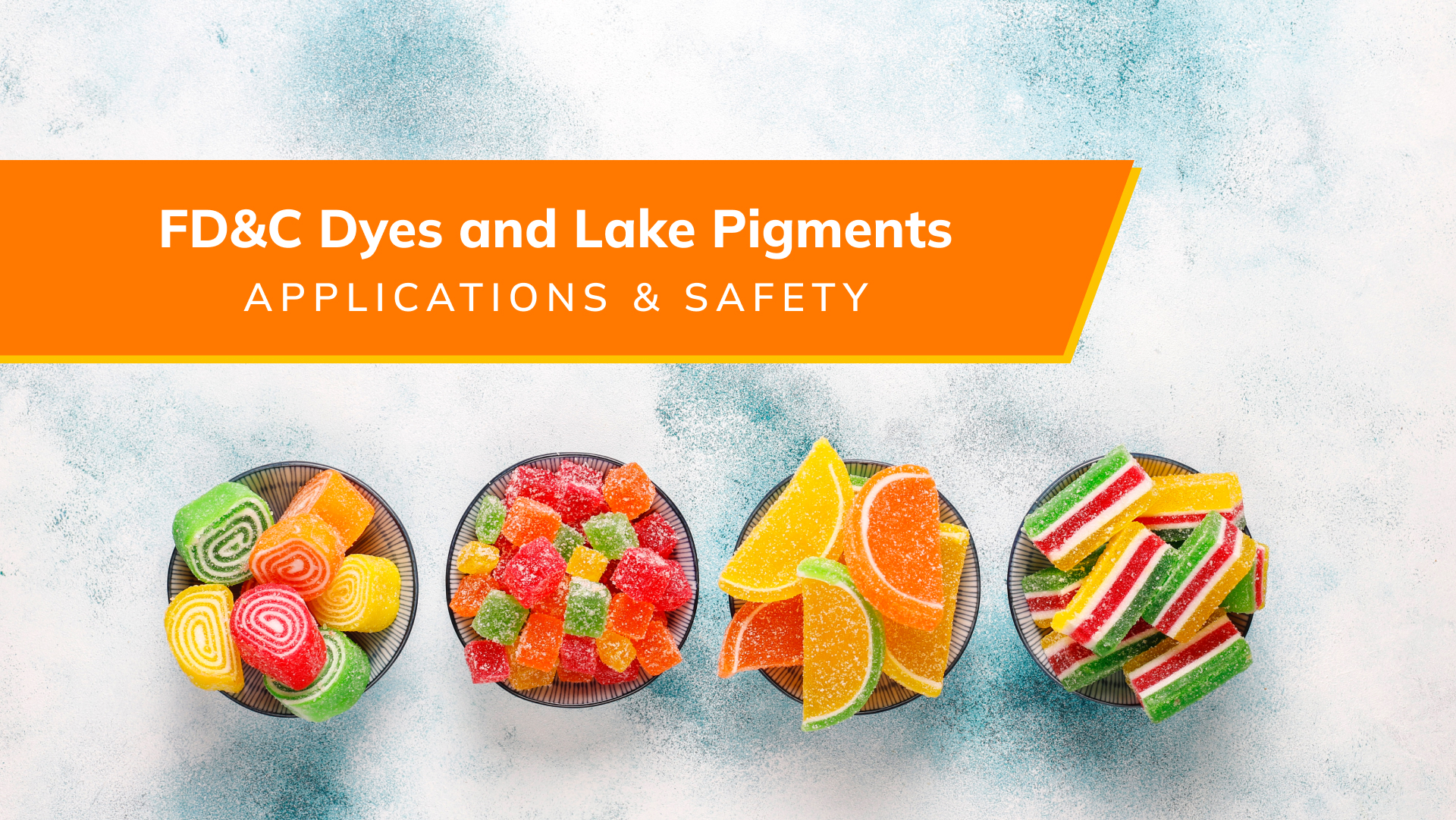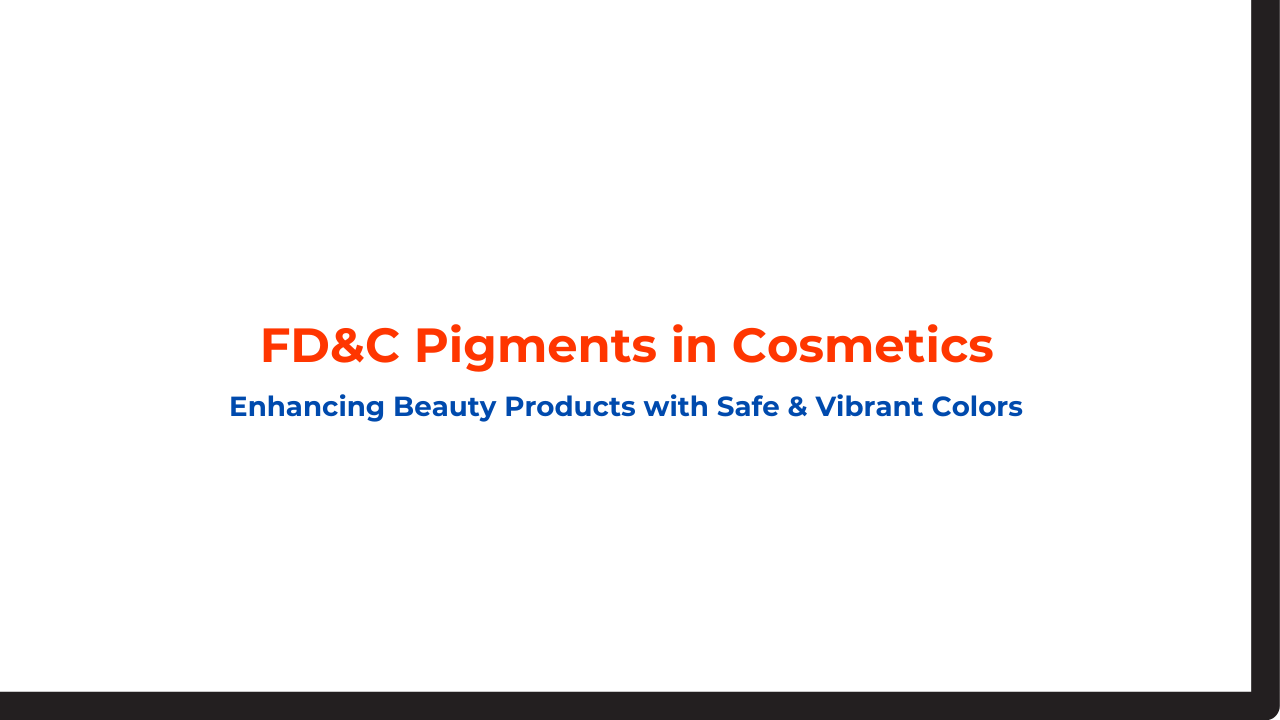Lake colors are a type of pigment; however, they differ from other dyes and pigments in a few ways. When selecting between lake colors and pigments, it’s essential to consider the application, ingredients, desired texture or color, and other finished product characteristics. This blog post will show you the difference between lake colors and pigments.
Although lake colors behave similarly to pigments, there are some key differences in how they function. Lakes are bound to a chemical substrate, including calcium, aluminum, talc, or barium, to create insoluble products. Nonetheless, this class of pigments is prone to delaking and bleeding when used unsuitably.
If you are still wondering about the key difference between lake colors and pigments, continue reading this blog post.
What are lake colors?
Lake colors are pigments that are insoluble in water and are used as food coloring to produce colors, including food, cosmetics, and more. Several salts precipitate with soluble dyes to create different lake colors.
As a result, lake colors are manufactured using FD&C dyes, making mixing them with fats, sugars, and oils easier. FD&C dyes and coloring are widespread in various industrial applications, such as foods, drugs, and cosmetics.
Additionally, lake colors are used where dyes are unsuitable due to their solubility in water. Lake colors are one of the brightest and most consistent lake colors available in the industry.
Key features of lake colors
Some key features of lake colors include:
- Oil Dispersibility
Chocolates, foundations, blushes, lipsticks, and coated tablets all benefit from its excellent oil and fat dispersion.
- Heat Stability
Lake colors stand in higher temperatures, making them ideal for baked goods and other products that require good stability during manufacturing and storage.
- Water-Insolubility
Lake colors are water-insoluble, making them the best option for products with greater oil or fat bases. This property also makes them a good choice for products with multiple colors or layers, since lake colors do not cause any bleeding on products.
- Usage in Food and Pharma
Lake colors are used in different products worldwide but predominantly in food and pharmaceutical products. They are a common ingredient in confectionery, baked goods, and dairy products. Lake colors are frequently used in pharmaceuticals to give tablets and pills long-lasting coloring.
Benefits of lake colors
- Lake colors are used as coloring agents to provide colors to various products, including foods, drugs, and cosmetics.
- Lake colors have great versatility and can be adapted easily.
- Lake colors have strong stability and do not bleed easily compared to dyes that can be dissolved in water.
- It is easier to combine & mix lake colors with fats, vegetable oils, cosmetic oils, and other products.
- Lake colors can be easily found in various color concentrations.
What are pigments?
Pigments are powder or color substances that make products more appealing and visually attractive. They are used for cosmetics and various other home care and skin care products. Water or other media cannot dissolve pigments since they are chemically unreactive; dyes, on the other hand, are colored substances that are soluble or dissolve in solution when used.
There is a difference between dyes and pigments regarding whether they are organic or inorganic. Both pigments are insoluble in water: pigment molecules are highly colored but insoluble in water, partially or entirely. Due to pigments’ soluble nature, dyes cannot be dissolved without a binding agent (or binder).
Furthermore, there have been many advancements in pigment technology for environmental safety, making them the perfect choice for cosmetics and home care products.
Key features of pigments
The following are some key features of pigments:
- Wide Color Range
Pigments can be used to create various products by mixing certified synthetic colors or earth tones, making them suitable for creating products that distinguish themselves from one another.
- Heat and Light Resistance
Pigments, such as inorganic pigments, offer greater resistance to environmental factors, including high temperatures and UV radiation.
- Use in Non-Food Applications
Pigments are commonly used in non-food products, including home care, personal care, coatings, cosmetics, and other non-consumable items.
- Particle-Based Coloring
Numerous products do not dissolve pigments but suspend them in the media, giving them opacity and rich color.
Benefits of Pigments
Here are the top benefits of pigments, including:
- Pigment colors are derived synthetically and are environment-friendly, safe, less toxic, and cause less pollution.
- Color pigments are advantageous over dyes because they retain color for long and can endure intense heat, light, and weather conditions.
- Pigment colors are used as color additives for various textiles, fashion products, and other applications.
- Color pigments can be purchased cheaply and are incredibly inexpensive when dyeing.
Conclusion
The bottom line is that identifying the main difference between lake colors and pigments is crucial to properly selecting your business applications. Whether you are creating confectionery and drinks items or trying to create opacity in cosmetics and personal care products, choosing the right color is crucial.
It’s vital to ensure your products’ colors meet all the regulatory standards to develop a brand image so that people begin to trust your products, leading to more efficient product sales and brand recognition. If you are an industrialist or individual professional looking for more information on a wide range of lake colors, dyes, or pigments we produce at Hridhan Chem, don’t be shy to get in touch with us today!




